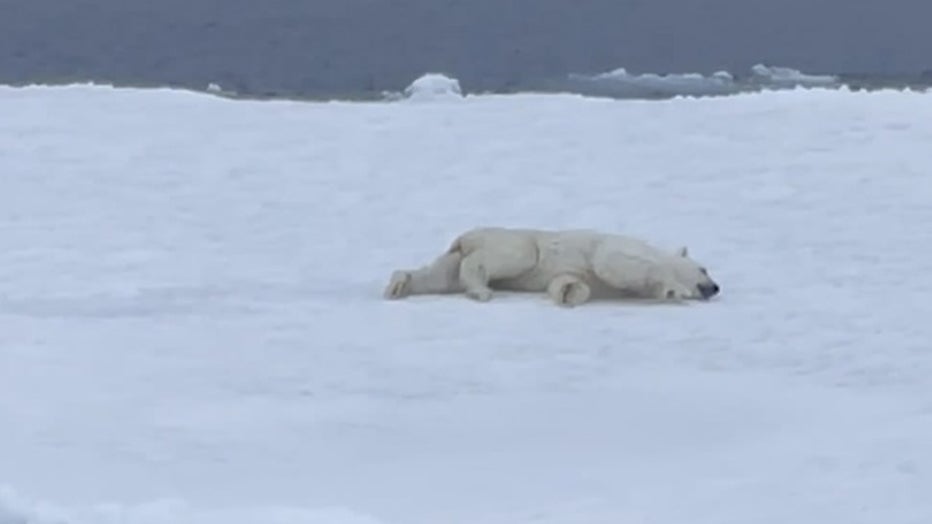Watch what a polar bear has to do to move across ice sheets in the Arctic
Polar bear scoots and slides along snowy ice sheets in the Arctic
A tourist captured images of the animal during an Arctic cruise. Her videos showed the polar bear, the largest carnivore species on the planet, acting as playfully as man’s best friend.
THE ARCTIC CIRCLE - The majestic polar bear leaps across the water, landing on an ice sheet with a semi-belly flop.
That’s one of the sights tourist Emma Postolec caught during an Arctic cruise on Sept. 27. Her videos showed the polar bear, the largest carnivore species on the planet, acting as playfully as man’s best friend.
At one point, the bear drops its shoulder and chin to the snowy ground and, with its rear haunches in the air, scoots its way forward along the ice sheet.

The polar bear scoots across the ice. (Emma Postolec via Storyful)
It can also been seen rolling around on the ground, before then crawling on its stomach and snaking over the ice to get to the frigid water’s edge.
While its movements may seem unexpected for such a formidable creature, they are similar to movements often recommended for people to safely move across ice.
For example, should a person feel the ice crack beneath their feet, the Ohio Department of Natural Resources recommends lying on your stomach and spreading your arms and legs.

The polar bear rolls and snakes its way along.(Emma Postolec via Storyful)
This allows your body weight to spread over a greater surface area rather than concentrated in a small area, increasing the likelihood of the ice cracking even more.
Polar bears are well-equipped to move on top of ice sheets. They have large paws to help distribute their weight on the ice, and they have large claws that keep them from sliding around.
They also have thick fur on the bottoms of their feet, which helps reduce the amount of direct contact their sensitive paw pads would have with the cold snow and ice.
LINK: Get updates and more on this story at foxweather.com.

